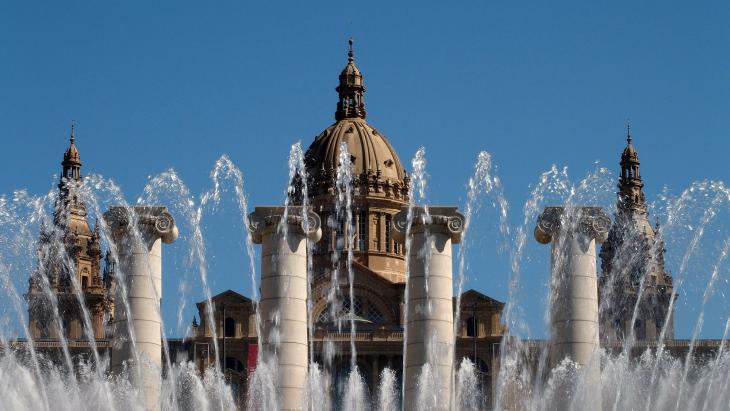Points of interest in the city
The water route

The building of a modern city
Water was a scarce resource in Barcelona for many centuries. Droughts became veritable disasters, as the old medieval irrigation channels proved insufficient for a constantly growing city. More and more channelling systems were built over time but it was not until the 19th century that truly efficient infrastructures were established. Barcelona has been consolidating its relationship with water ever since, and it is now available all over the city.
The first systems
During the medieval period, water for domestic use was drawn from wells dug in private courtyards and public squares. Water for irrigation, industrial use and other purposes came from the old Roman aqueduct. The Rec Comtal was a canal that brought Barcelona water from Montcada i Reixac. It was operational from its creation in the 10th century right up to the 19th century. An open section has been preserved in Nou Barris.
The water reaching the centre of the city was insufficient for the city's growing population, however, and its use led to long-term legal disputes. In addition, the city's lack of infrastructures delayed investments and industrial projects, and while some districts such as Horta-Guinardó enjoyed plenty of water, not a drop reached others.
A century of water
In the 19th century, as part of the Industrial Revolution, the City Council and the city's employers' association launched several initiatives that were the seed of the modern water culture: water began to systematically reach homes and industries and was even used recreationally, as can be seen from the waterfall in Parc de la Ciutadella and Montjuïc's fountains, built for the first and second Universal Expositions, respectively.
Parts of the public works carried out over the 19th century have been preserved, including tanks, canals and other structures, many of which have been restored under heritage and historical criteria or even recycled for new purposes. Such is the case of the Dipòsit de les Aigües, a reservoir that used to supply the waterfall mentioned above, which is now part of the University of Pompeu Fabra's Ciutadella Campus. Other examples include the Torre de les Aigües in Eixample, on C/ Roger de Llúria, the Torre de les Aigües in Poblenou (also known as Besòs), the Casa de l’Aigua in Trinitat Vella, the Casa de l’Aigua in Trinitat Nova and the Dosrius Aqueduct in Nou Barris.
A project for the future
Created at the start of the 21st century, the Parc Fluvial del Besòs is the result of an environmental restoration project, largely paid for with European Union funding. Comprising the final stretch of the River Besòs and extending from Montcada i Reixac to Sant Adrià, this park is one of the best examples of the new Barcelona, which is looking after nature areas and championing sustainable water use. Thanks to the improvements to the river, the whole area has become healthier, many natural habitats have been reclaimed and a huge public space created to be enjoyed by the people: it is a park for present and future generations.
Horta-Guinardó, the water city
The district of Horta-Guinardó has always been strongly linked to water, which has left its mark on its origins. In fact, its geographical position, in the Collserola mountain range, gave rise to numerous gullies and shaped the area's economic and social development: this abundance of water allowed a good many farms and reservoirs to be built and the springs became meeting places for local residents. Now it is possible to discover the district of Horta-Guinardó from this special perspective, where water and its social uses are its leitmotiv.


